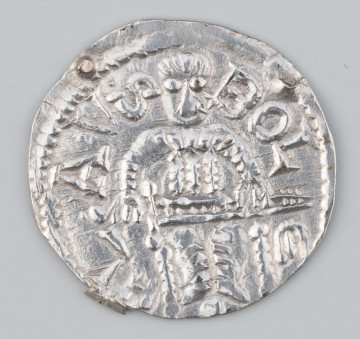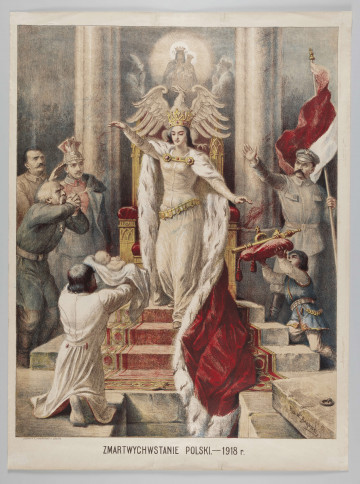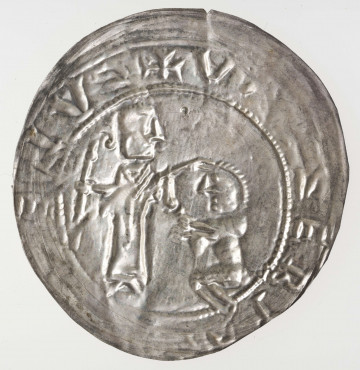
Denarius of Bolesław the Curly
1146 — 1152
National Museum in Lublin
Part of the collection: Money on Polish territory in the Middle Ages
With the death of Bolesław the Wrymouthed in 1138 Poland went through a period of regional disintegration. The Piast state was divided between his sons, of whom Wladyslaw, the eldest, became the ruler. His sovereign power, apart from the privilege of conducting foreign policy and concluding treaties, included the exclusive right to issue money.
During the eight years of his reign (1138-1146), which ended with a defeat in a war with his younger brothers and his forced departure from the country, Władysław the Exile issued several denarii in chronological succession. It was done in connection with the cyclic exchange of money, which involved the withdrawal of coins in use and their replacement with new denars, easily distinguishable because of their different images from the previous ones. The exchange was carried out after a favourable conversion for the ruler (for example four new denars for six old ones). It was an important source of income for the ruler.
After the issue of a denarius connected with the beginning of the reign of Duke Władysław, with the image of the ruler on the throne and the scene of the knight's fight with a lion, a coin with the image of the ruler holding a shield and a sword and the image of St Adalbert on the reverse was put into circulation. Dated 1141-1143, the image of Duke Władysław on the coin is not his true portrait, but a symbol of the ruler, his dignity shown by the meaning of the sword and shield, which symbolised the readiness of the Christian ruler to defend the state order, moral order and the Church against external enemies and spiritual evil. The secular content of the obverse corresponds with the depiction of the patron saint of Poland, St Adalbert, with a pastoral and a book of the Gospels – the support of the ruler.
This denarius is one of the most common 12th-century Polish coins, struck in an edition of about 2 million copies. Produced in the Cracow mint, the coins of Władysław the Exile circulated mainly in Lesser Poland with the Sandomierz and Lublin regions, in central Poland, Silesia and Greater Poland. They remained in use for several decades, circulating together with the coins of Bolesław the Curly (1146-1173).
Tomasz Markiewicz
Author / creator
Dimensions
cały obiekt: diameter: 16,1 mm
Object type
numismatic
Technique
stamp minting
Material
silver
Creation time / dating
Creation / finding place
Owner
The National Museum in Lublin
Identification number
Location / status

1146 — 1152
National Museum in Lublin

1918
National Museum in Lublin

1135
National Museum in Lublin
DISCOVER this TOPIC
Museum of King Jan III's Palace at Wilanów
DISCOVER this PATH
Educational path